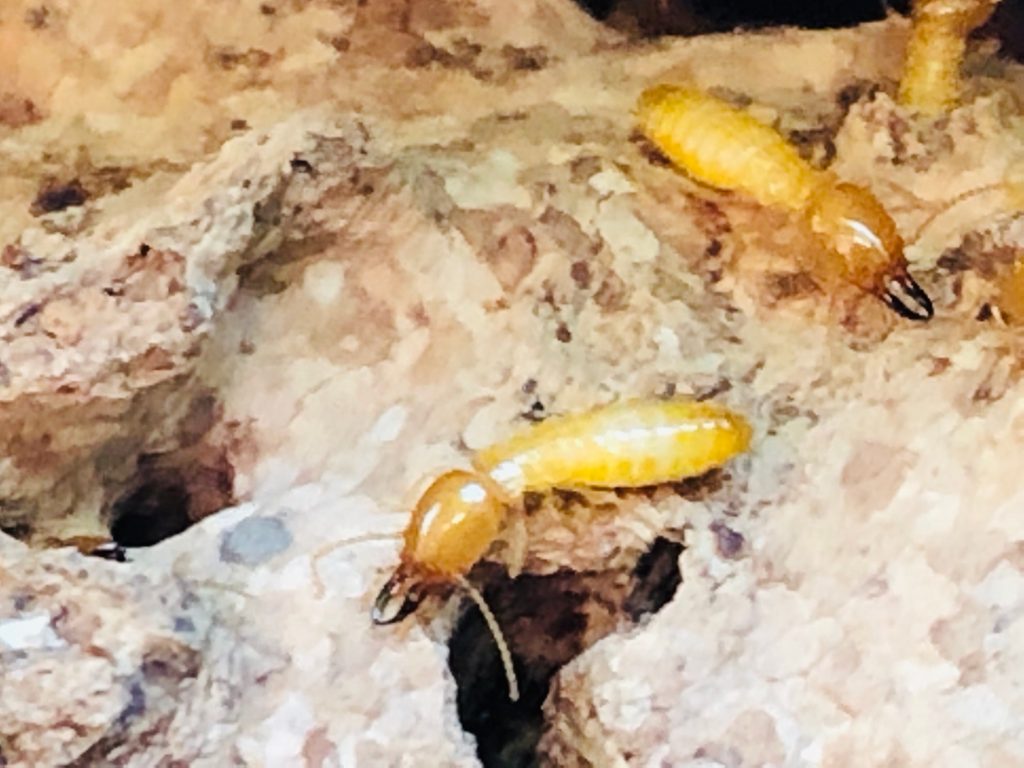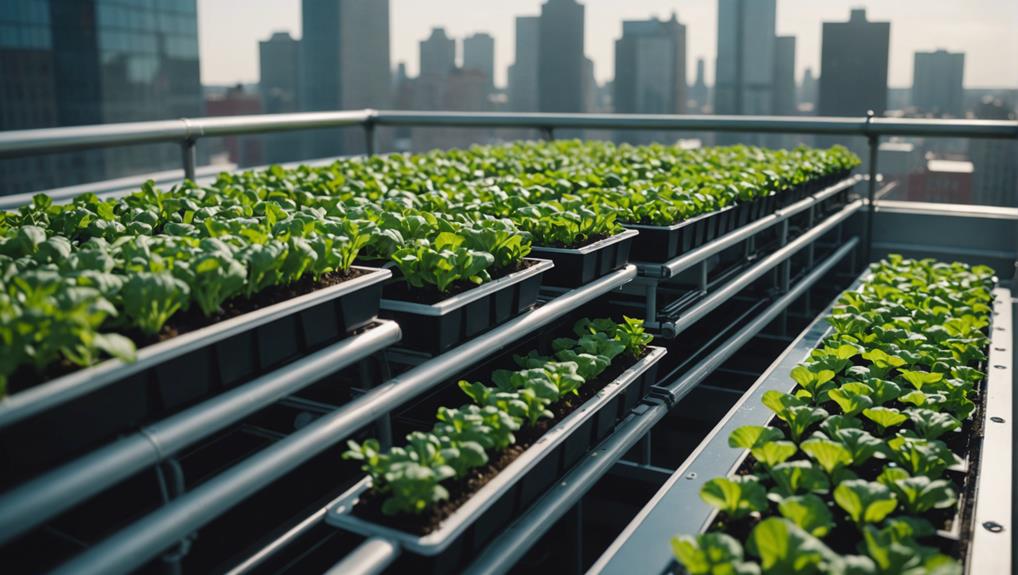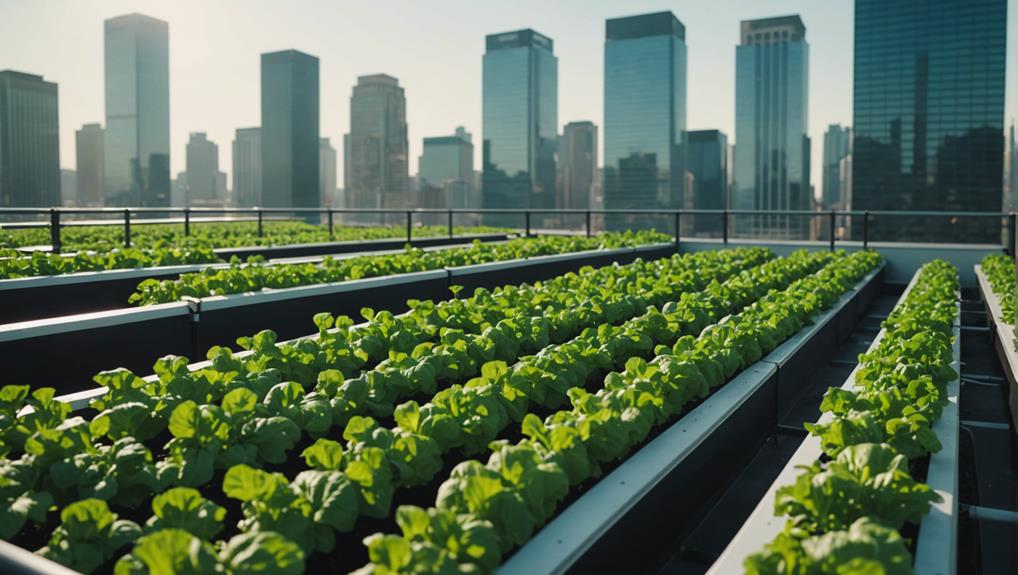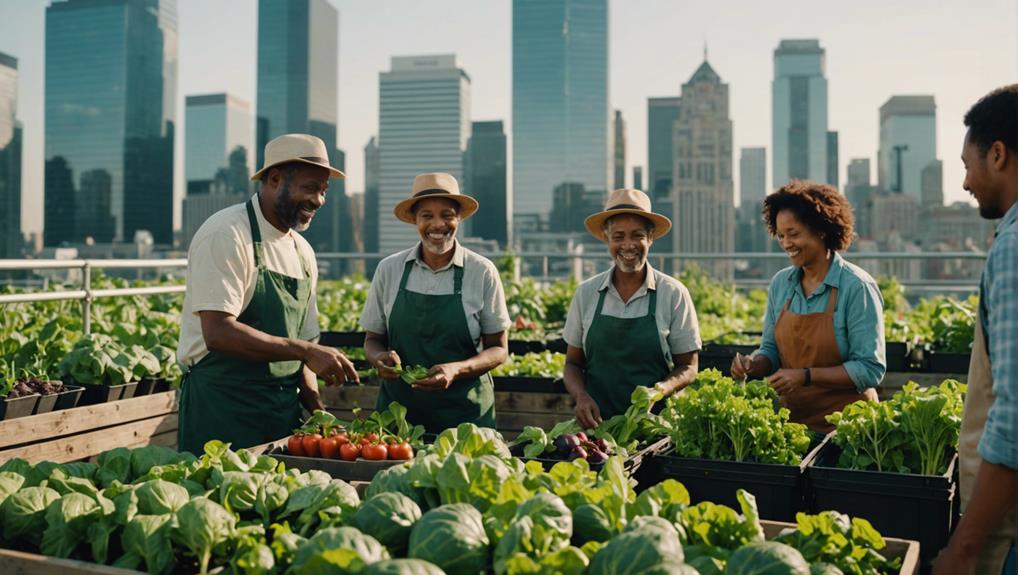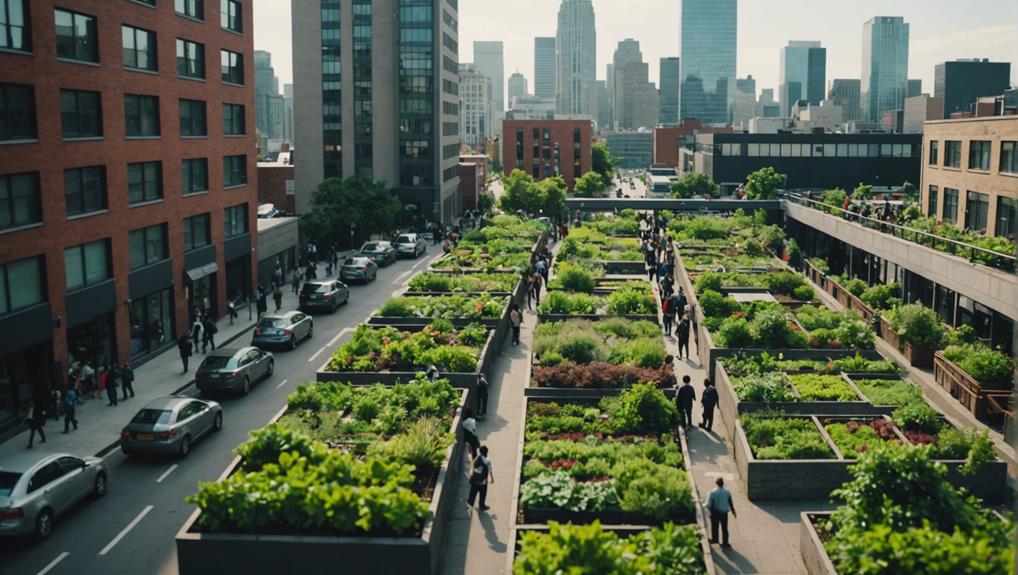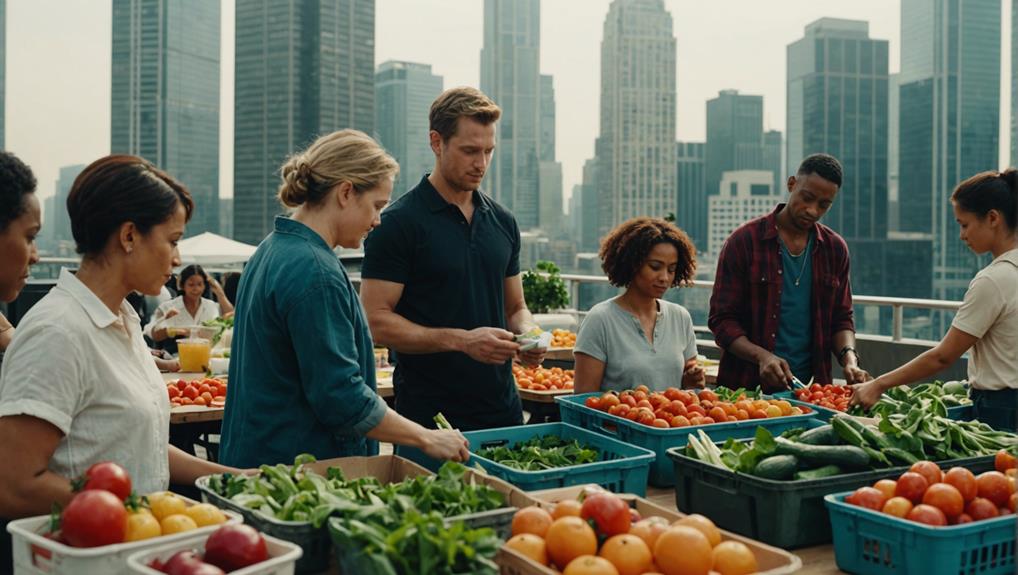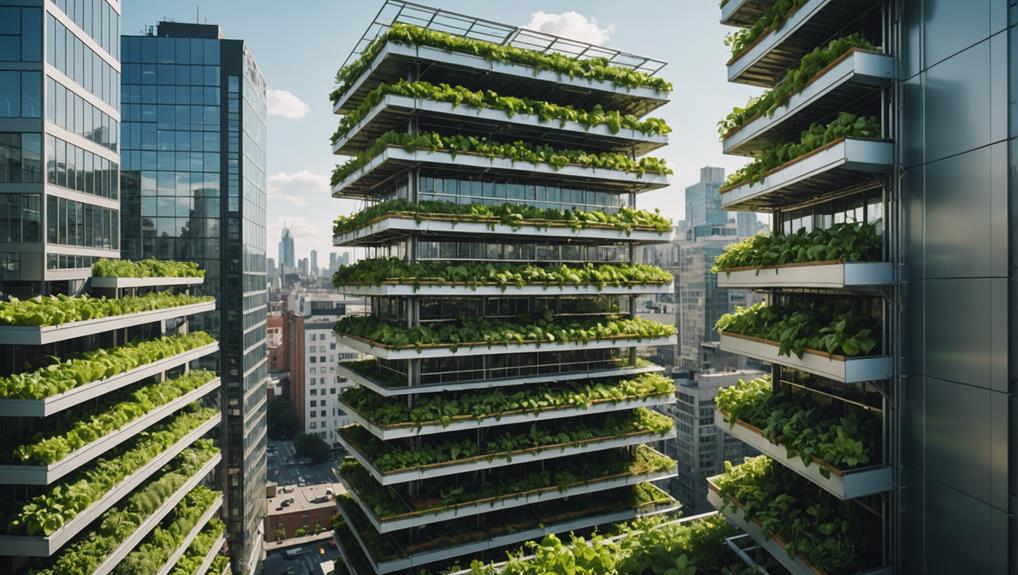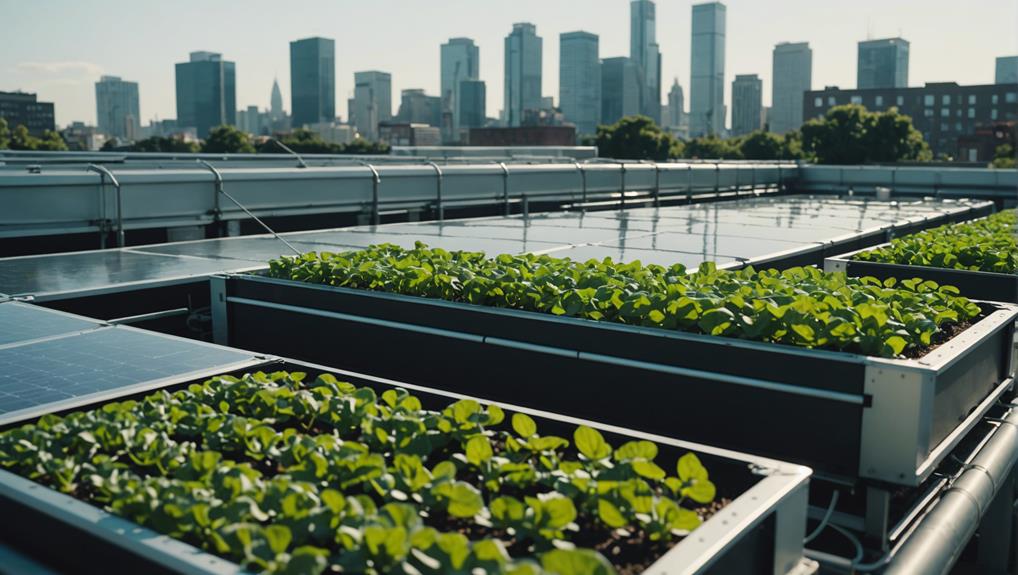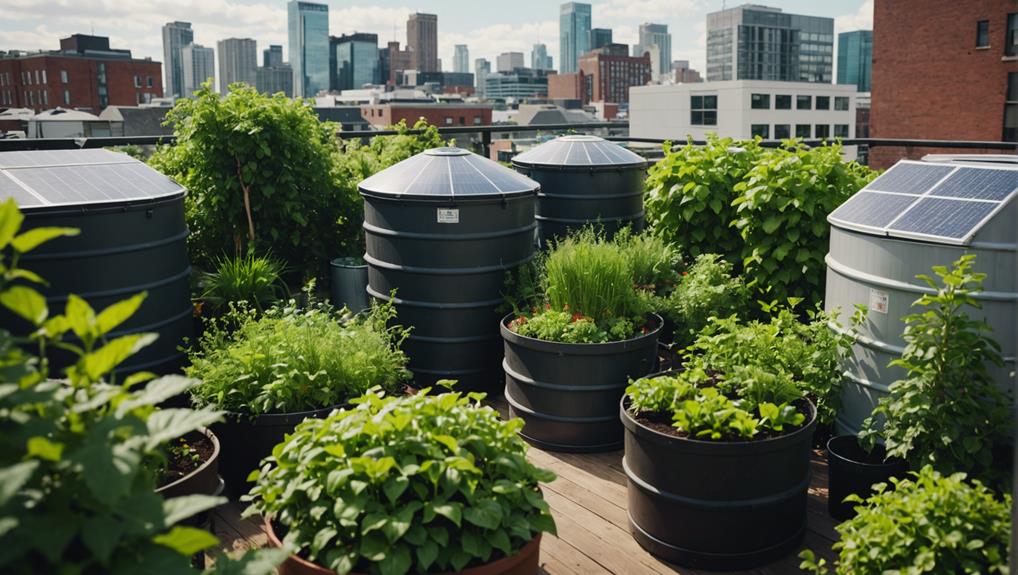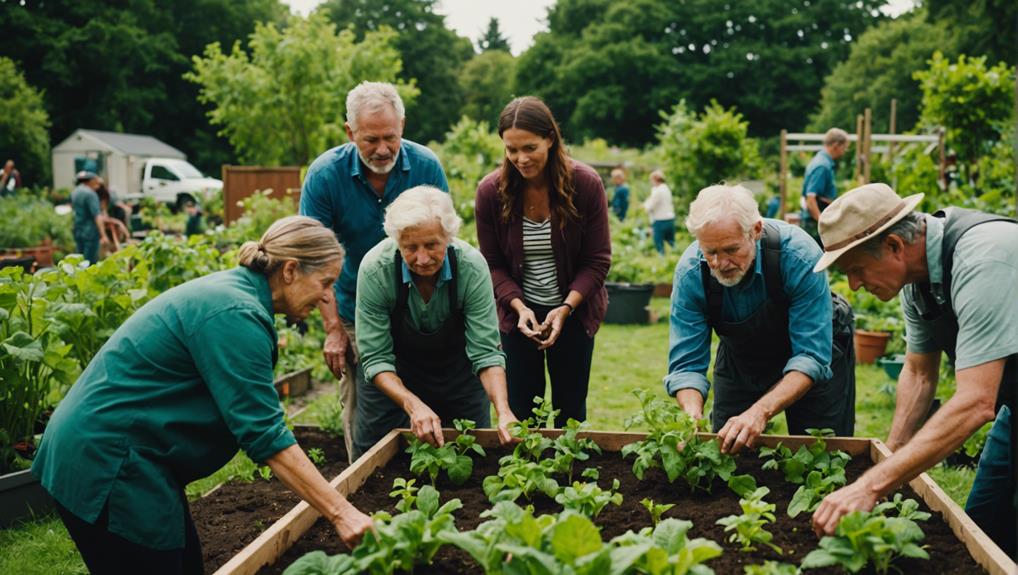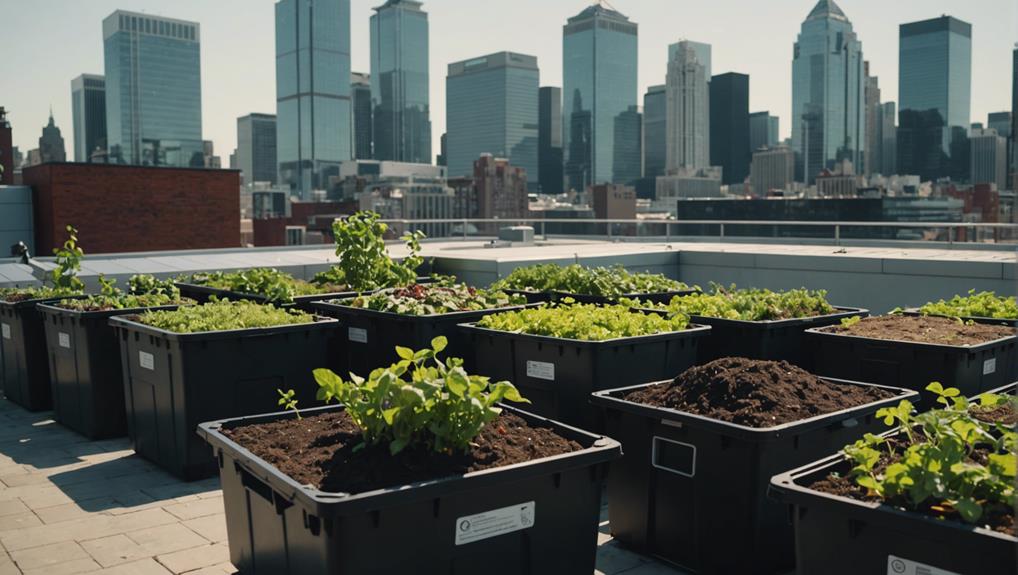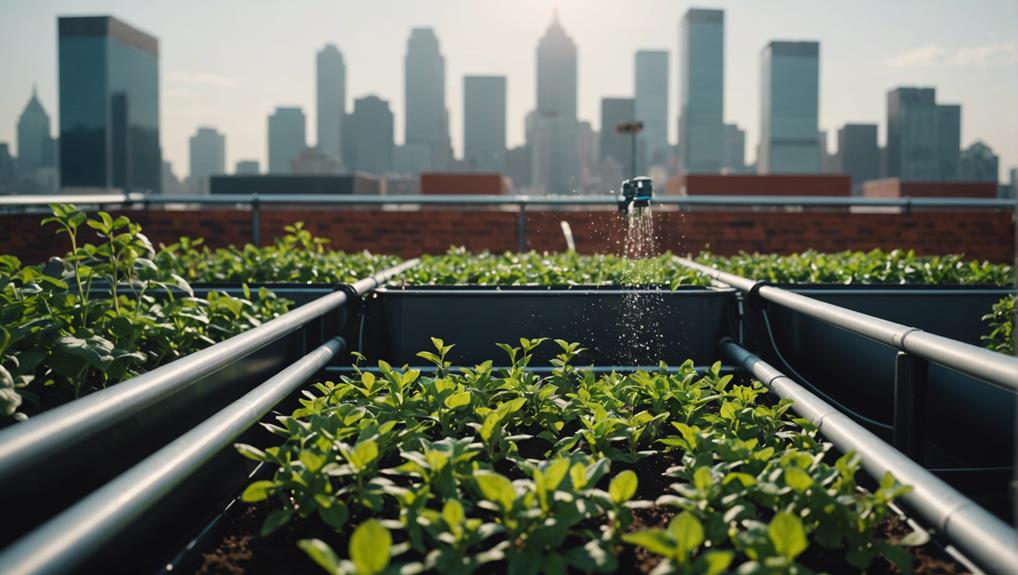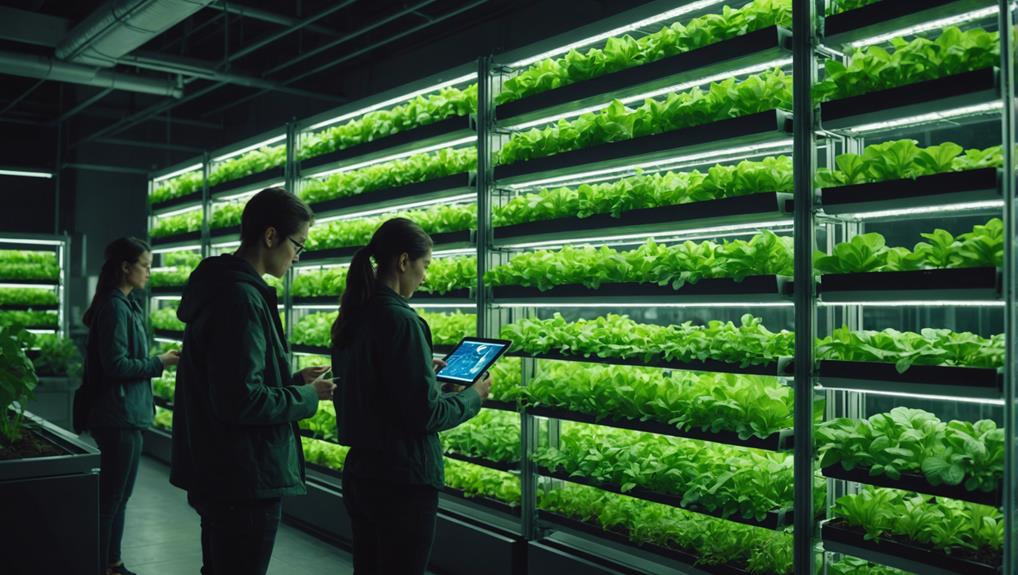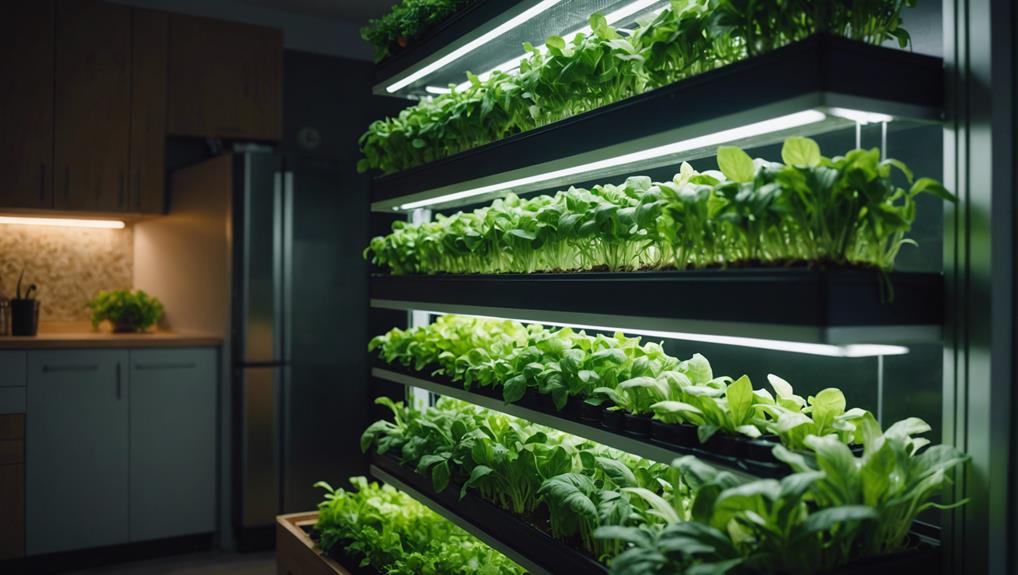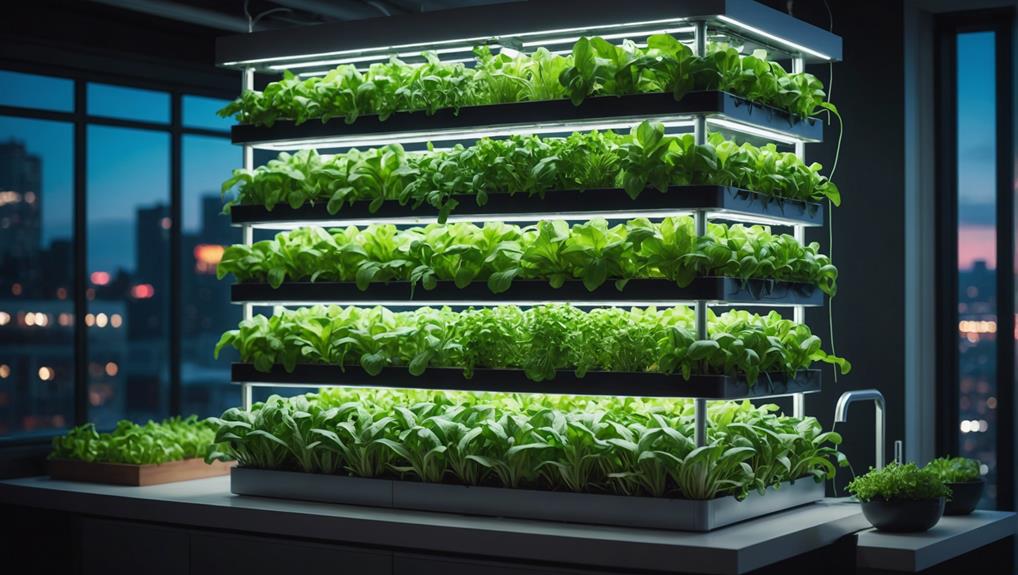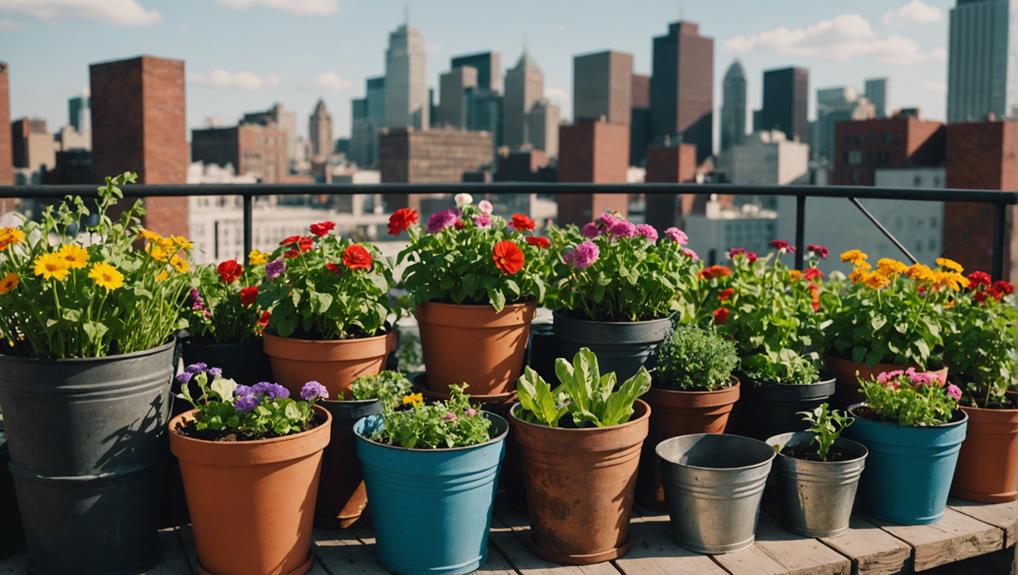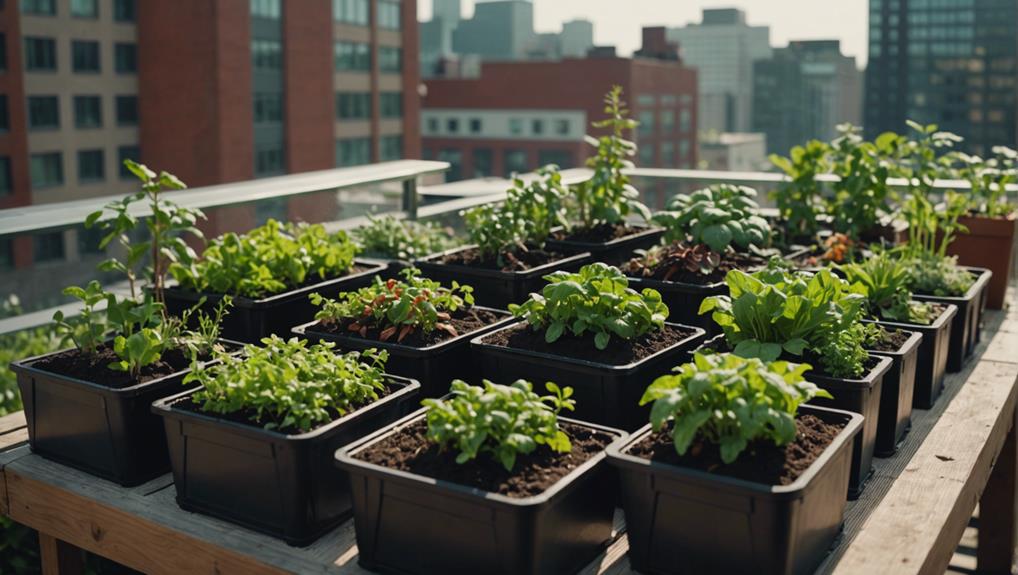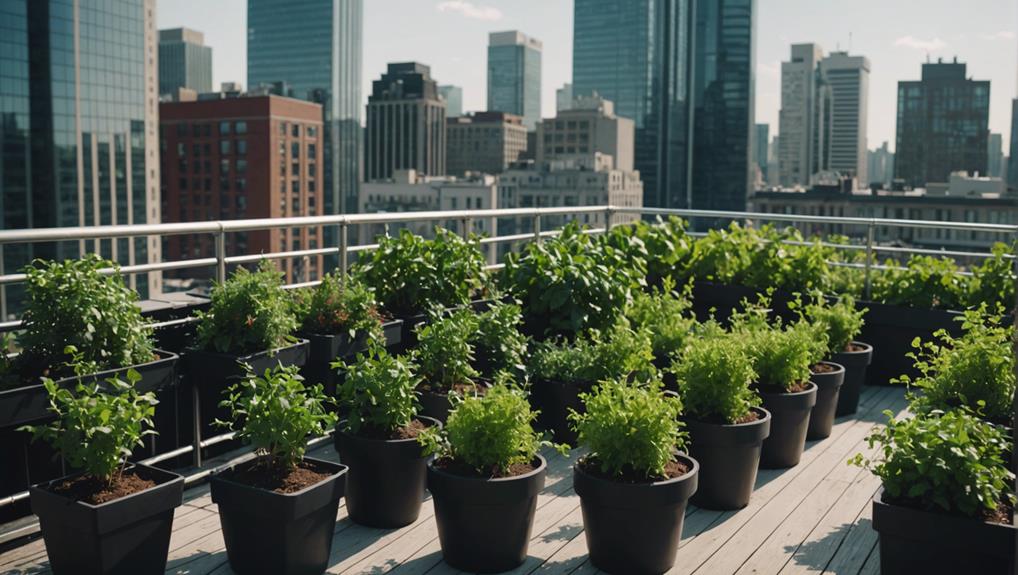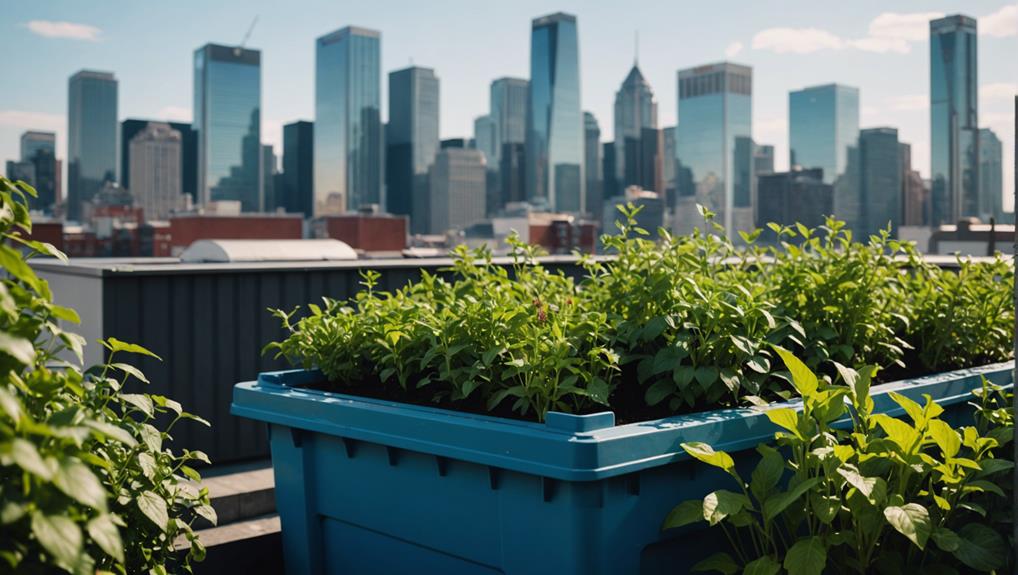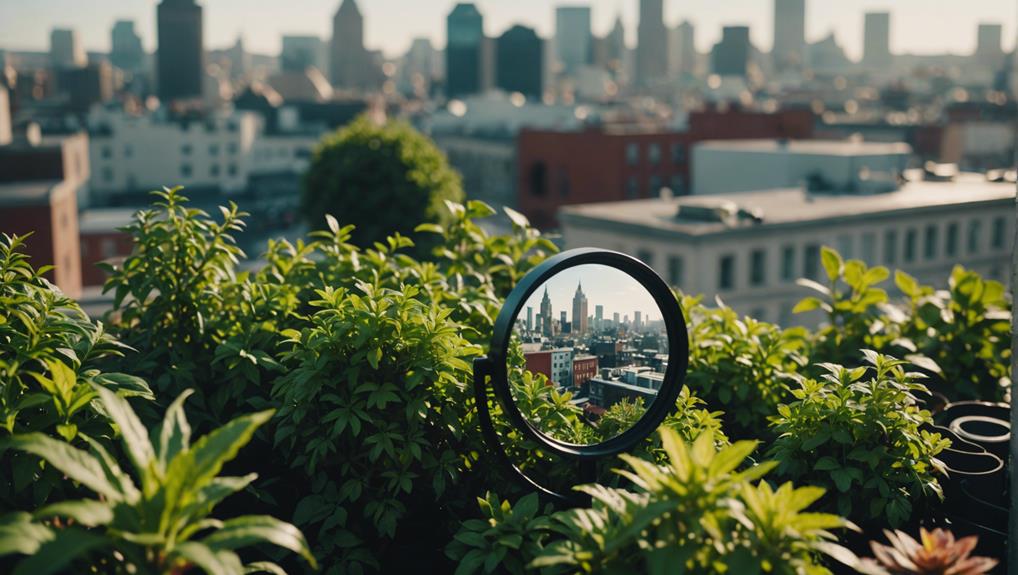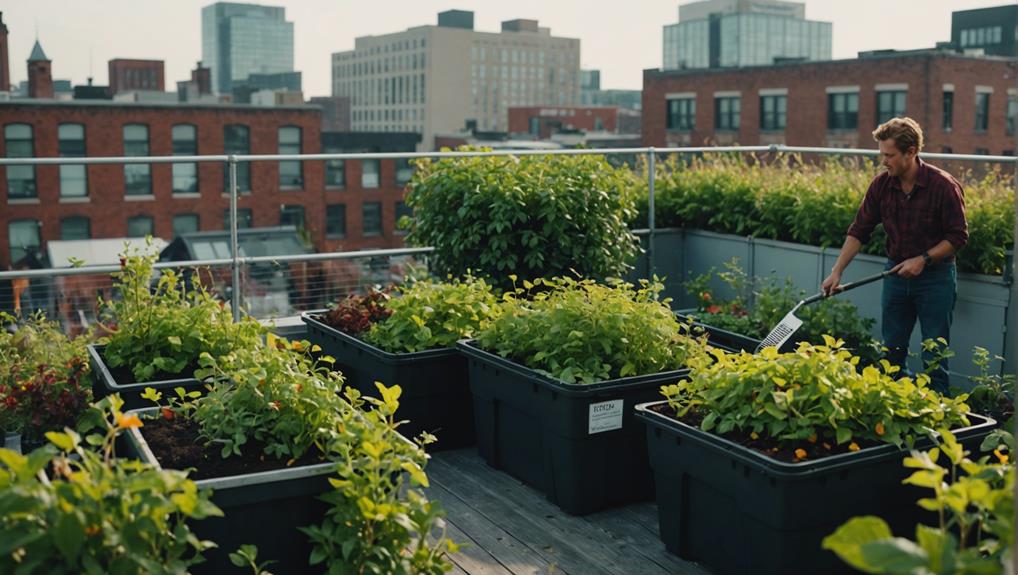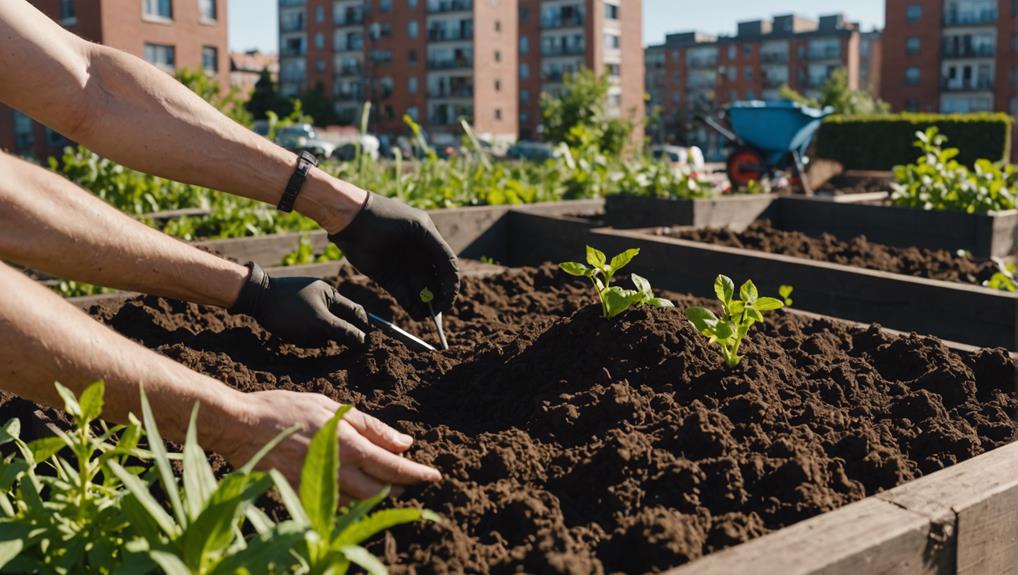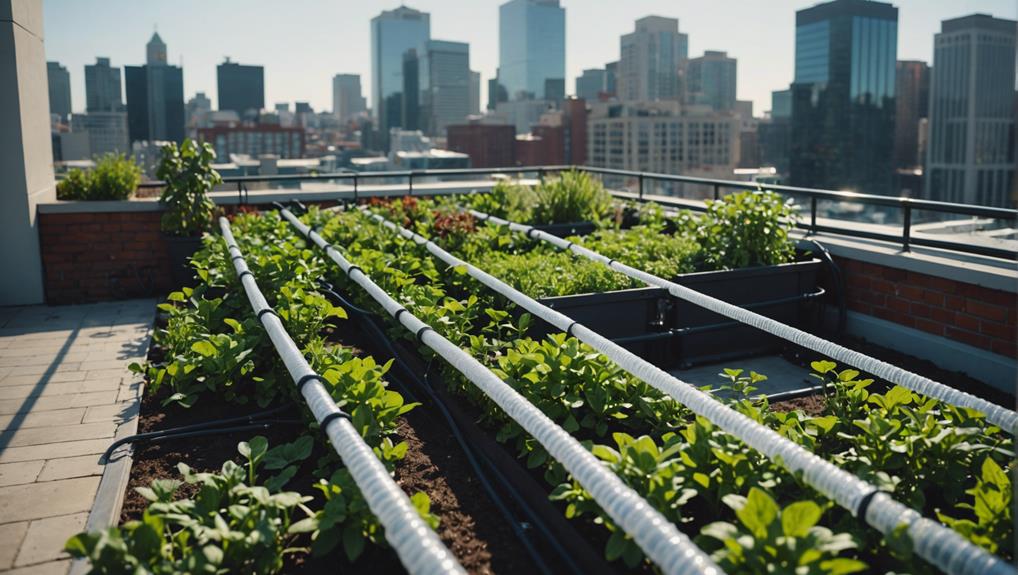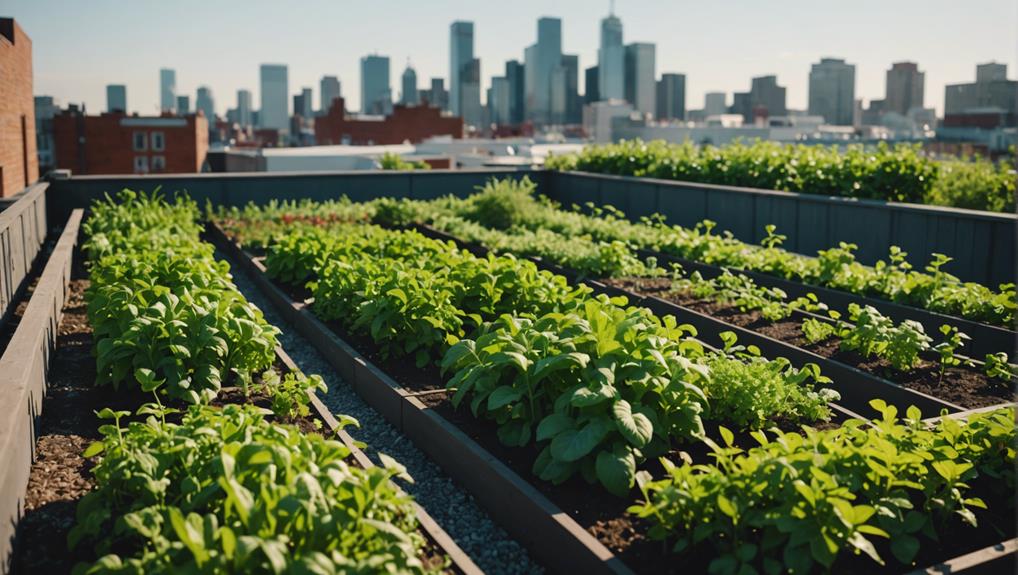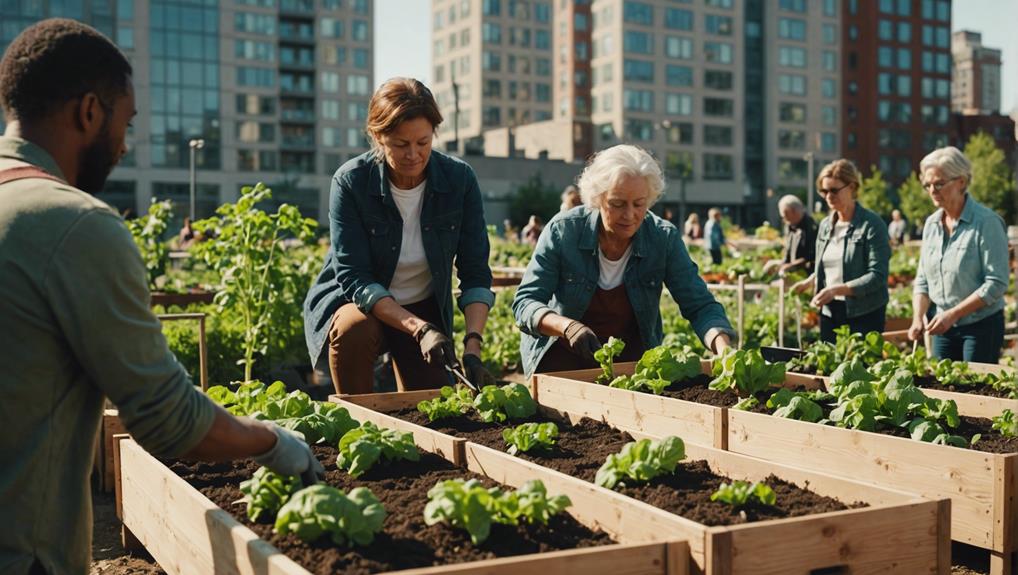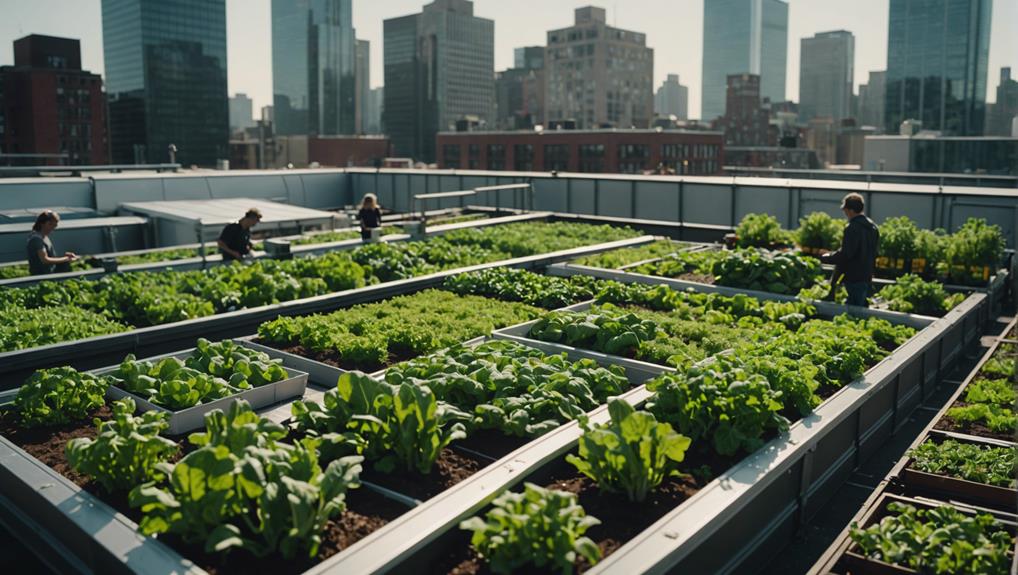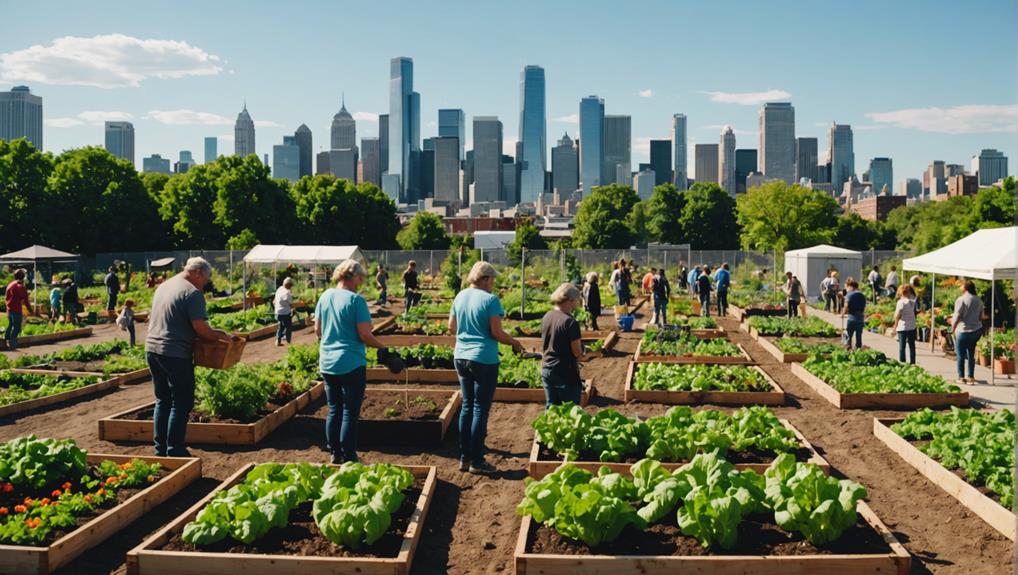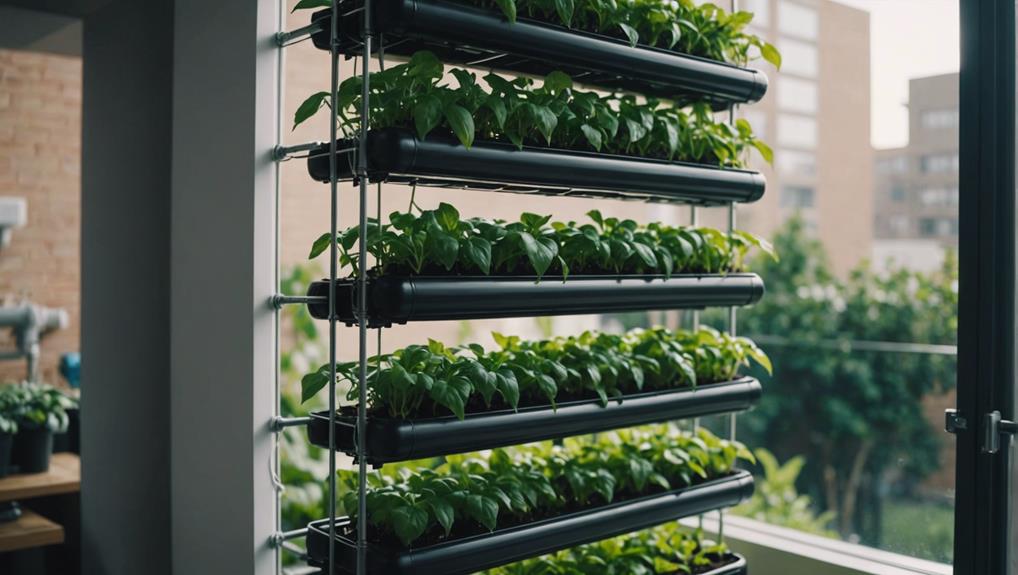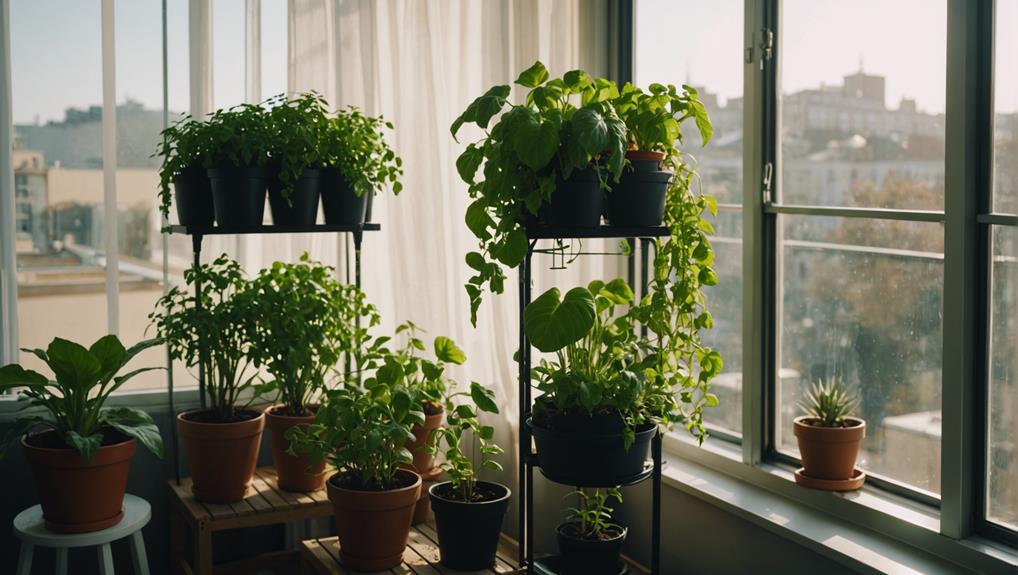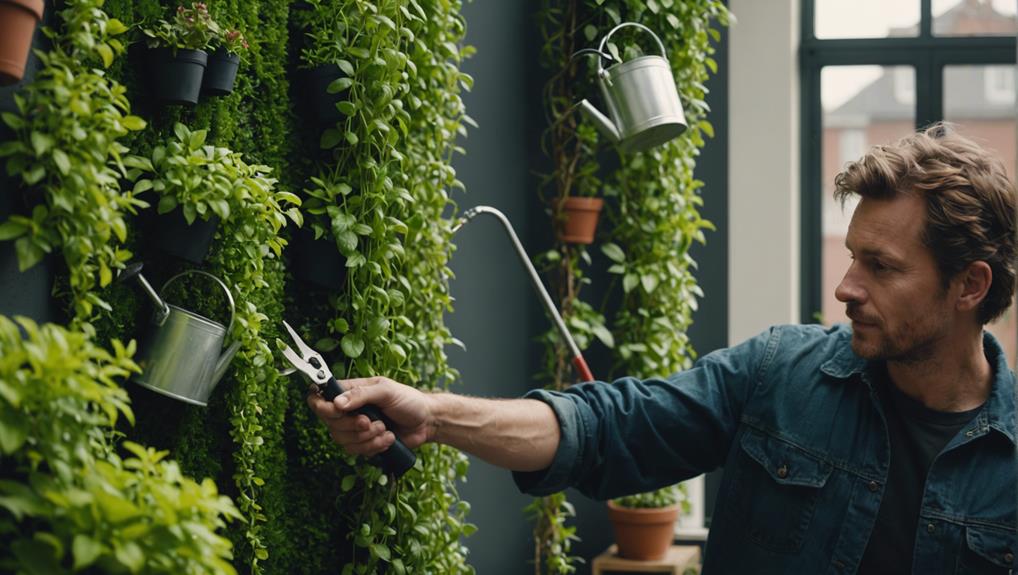Imagine turning your apartment into a cool, plant-filled place with your own DIY vertical farm!
You can use shelves, towers, or hanging baskets to grow plants up high, saving space.
With special LED lights and a water system that doesn't use soil, your plants like herbs and cherry tomatoes will grow really well.
If you're thinking about starting, the first thing to do is figure out how to set up your vertical farm so it fits right in your home and works for your daily life.
Key Takeaways
- Stack shelves or hang plant holders on walls to fit more plants without needing a lot of room.
- Use a water system that feeds plants automatically to help them grow better.
- Put special lights over your plants to make sure they get enough light, as sunlight might be scarce.
- Grow small plants like herbs or baby greens because they don't need much space.
- Keep an eye on the heat and dampness where your plants are to keep them happy and healthy.
Understanding Vertical Farming
Vertical farming is like building a plant skyscraper inside your home. It's a smart way to grow plants in small spaces, like city apartments. Instead of spreading out, plants stack up on shelves or in towers, which is great for places without much room.
To start your own vertical farm, you'll need some special gear that fits well in cozy spots. You might use shelves with lights built in or pick a Tower Garden, which is made just for this. You can grow many things, like salad greens, herbs, and tiny veggies. Plus, you can get creative with what you use as planters, like old wooden boxes or laundry tubs.
With plants arranged on different levels, you use every bit of space wisely. This setup also lets you better manage things like light and warmth, which helps your plants grow strong and healthy.
Choosing Your Space
To start your vertical farm at home, first pick a spot like a corner or a closet where you don't usually put anything. You want to use up high spaces to plant lots of greens.
Think about using shelves or tall plant stands so you can stack your plants up high. This way, even a tiny spot can hold a bunch of plants.
If you like gadgets, try using water systems without soil, called hydroponics, to grow your plants. This method is neat and doesn't use much water.
Choose containers that fit your space well. You can use old tubs, crates, or buckets. Make sure they can hold your plants, whether you're using soil or a water system.
When you build your vertical farm, make sure it's strong enough to hold all your plants, especially if you want to grow big leafy greens. This cool setup will make your place look green and fresh.
Selecting Suitable Crops
After you've picked a spot, it's time to choose the best plants for your vertical farm at home. In small spaces like apartments, picking the right plants is key for good growth and lots of produce.
Plants like lettuce, spinach, and kale are great for vertical gardens because they don't take up much room and don't need a lot of light. They grow well on top of each other, helping you make the most of your space.
Herbs such as basil, mint, and cilantro are also great choices. They keep growing even after you cut them, so you always have fresh herbs ready to use. Plus, they smell nice and make your home feel more pleasant.
If you want to try something different, you can grow microgreens and radishes. They grow quickly, which is perfect if you're busy and can't wait long for your plants to grow.
You can also add some cherry tomatoes, peppers, and small cucumbers to mix things up and grow more kinds of vegetables.
Don't forget about edible flowers like nasturtiums and pansies. They make your vertical garden look pretty and you can eat them too. They help turn your vertical farm into a beautiful part of your home.
Designing the Layout
Designing the layout for your vertical farm in your apartment means you need to think about using every bit of space smartly. Imagine turning your place into a plant-filled wonderland by stacking plants up high and spreading them around.
You can start by setting up shelves, using hanging baskets, or putting up trellises. These help you stack your plants one above the other, which means you get lots of growing space without using up much room on your floor.
For plant pots, try using things like old wash tubs, wooden boxes, or coffee cans. They're great for planting and make your space look cool and a bit old-fashioned.
Choose to plant in a special way without soil, like using a water system called hydroponics. This method is really clean, saves space, and makes plants grow strong and healthy. It keeps away dirt bugs and diseases and gives plants just the right food they need to grow well.
Lighting Essentials
When you set up your vertical farm, lighting is super important. You'll want to use LED grow lights because they really help your plants grow well. These lights shine in specific ways that make your plants happy and healthy.
In vertical farming, you don't just turn on the lights and forget about them. You need to adjust the light depending on what kind of plant you're growing. Each plant likes a different type of light, just like how some people prefer sunny days while others like it cloudy. You'll change the light's strength and how long it's on to make the perfect day for each plant.
It's a good idea to work with experts who know a lot about lights. They can make sure your lights are set up just right so your plants will grow big and strong. Plus, they'll make sure your setup looks good in your home too.
Watering Systems
When setting up a vertical farm in your apartment, picking the best way to water your plants is super important.
You could choose an automatic system that takes care of the watering for you, or you could water the plants yourself if you like being more involved.
Also, using less water wisely helps save water and keeps your plants healthy without wasting resources.
Automated Irrigation Options
When setting up a garden in an apartment, it's smart to think about automated ways to water your plants. These systems make sure your plants get just the right amount of water without you having to do it all by hand.
Let's look at three types of systems that can help:
- Drip Irrigation Systems: This system drips water slowly right into the soil near the plant's roots. It's great because it makes sure each plant gets just enough water without wasting any. This is super helpful for plants that don't like too much water.
- Misting Systems: Some plants love to feel like they're in a misty environment. This system sprays a fine mist over the plants, keeping them happy and moist, just like morning dew does. It's perfect for plants like lettuce and herbs.
- Self-Watering Planters: These are pots that have a special area at the bottom for water. The plants can drink from it whenever they need. This is cool because it stops the plants from getting too much or too little water.
Using these systems can make your indoor garden a lot easier to take care of and help your plants grow better.
Manual Watering Techniques
While automatic systems are handy, watering your plants by hand in a vertical farm gives you better control. This is especially important in small spaces like apartments, where you don't want to waste water. By using watering cans or spray bottles, you can make sure the water goes exactly where it's needed, helping you avoid giving too much or too little water.
It's important to keep an eye on how wet the soil is when you're watering by hand. This isn't just about giving your plants water; it's about keeping the soil perfectly moist for healthy plant growth. By checking the soil regularly, you can make sure each plant gets the right amount of water it needs to grow well.
Choosing to water your plants by hand also lets you get more involved with taking care of them. It's a smart way to use just enough water and feel more connected to your plants as they grow.
Water Efficiency Tips
To make the most of water in your apartment's vertical farm, try using drip irrigation or planters that water themselves. These help save water and make sure your plants get just what they need.
Here are three cool ways to use less water in your vertical farm:
- Add Smart Gadgets:
Put in sensors and timers that can figure out when and how much to water your plants. This smart setup stops too much watering and saves water.
- Try Hydroponics:
Use hydroponic systems where water keeps getting used over and over. This method really cuts down on how much water you use because it recycles water full of plant nutrients.
- Collect Rainwater:
Get a system that catches rainwater. This helps you use less tap water and gives your plants clean, natural water which is great for them.
Temperature and Humidity Control
To grow healthy plants in your vertical farm at home, it's important to keep the temperature around 65-75 degrees Fahrenheit and the humidity about 60-70%. This means the air should be a little warm and slightly moist, which helps plants grow well.
You can use special HVAC systems in your farm setup to help control the temperature and humidity. These systems make sure your plants stay warm enough and have the right amount of moisture in the air, which stops problems like mold and keeps your plants healthy.
It's also a good idea to use tools like hygrometers and thermometers to check on your farm's conditions. These tools tell you if you need to make any changes to keep everything just right for your plants.
Fertilizing Techniques
When setting up your vertical farm, think about using organic fertilizers. They're good for the planet and help your plants grow strong and healthy.
It's also important to get the mix of nutrients just right so your plants can best absorb them.
Organic Fertilizer Options
When you're setting up a vertical garden, using organic fertilizers is a great idea! Here are some choices that help your plants grow strong and healthy:
- Compost: This is basically rotten plant stuff that's full of tiny living things good for the soil. It feeds your plants slowly, so they get what they need over time, and it helps keep the soil nice and healthy.
- Worm Castings: This is poop from worms and it's super good for plants because it has lots of important stuff like nitrogen, phosphorus, and potassium. It also has special helpers that make it easier for plants to suck up nutrients.
- Seaweed Extract and Fish Emulsion: These are like power drinks for your plants. Seaweed extract helps plants fight off sickness and grow faster. Fish emulsion is like a balanced meal—it has everything plants need to grow up strong.
Using these organic fertilizers in your vertical garden will make your plants happy and healthy!
Nutrient Solution Ratios
To help your vertical garden grow well, it's important to know how to mix the right amounts of nutrients. When you grow plants in your apartment using a hydroponic system, you need to give them the right mix of three main nutrients: nitrogen, phosphorus, and potassium. These nutrients are super important because they help the plants grow strong and healthy, even in small spaces like indoors.
In hydroponics, the plants get their nutrients directly at their roots, without using soil. This is great because it avoids some common problems like diseases and pests. But, to make sure your plants are happy and healthy, you need to keep an eye on the nutrient levels and change them if needed. This helps prevent problems like slow growth or leaves turning the wrong color.
It's also important to know that young plants and older plants need different amounts of nutrients. Luckily, some hydroponic systems can now check what the plants need and change the nutrient mix automatically. This makes sure your plants always have what they need to grow well at each stage of their life.
Maintenance Tips
Keeping your DIY vertical farm healthy isn't too tough! Think of it like taking care of a pet, but instead, you're looking after plants. Here's a simple guide to help you out:
- Check and Adjust Often:
- Lighting: Make sure your plants get just the right amount of light. As they grow or as the seasons change, you might need to move the lights closer or further away.
- Temperature and Humidity: Use gadgets that tell you the temperature and how moist the air is. Keep the air just right for the type of plants you have, and make sure it's not too wet or dry.
- Keep It Clean and Healthy:
- Cleaning: Every few weeks, take apart the parts you can reach and give them a good clean. This stops bad bugs and germs from growing.
- Water Levels: Always check to make sure your plants have enough water, but not too much, so their roots are happy.
- Take Care of the Plants and Fix Any Problems:
- Trimming: Cut back some parts of the plants to keep them looking good and not too crowded.
- Keep a Plant Diary: Write down how your plants are doing and any fixes you've made. This helps you remember what works best.
